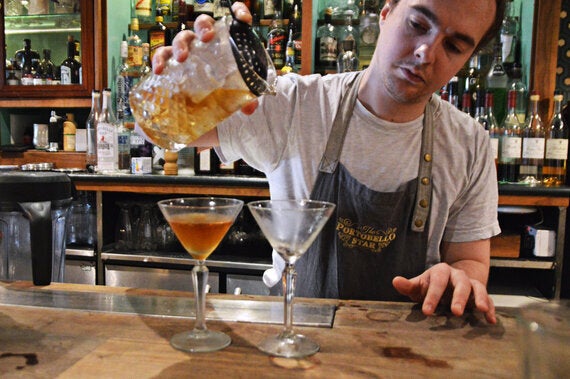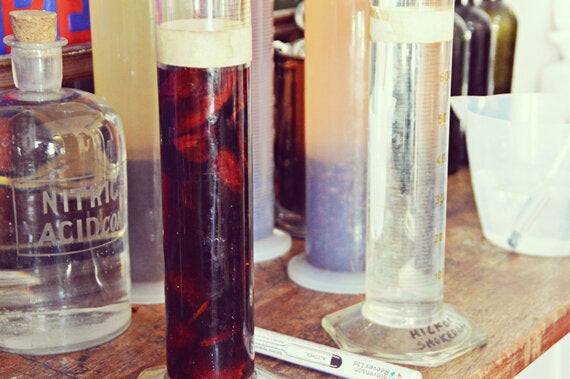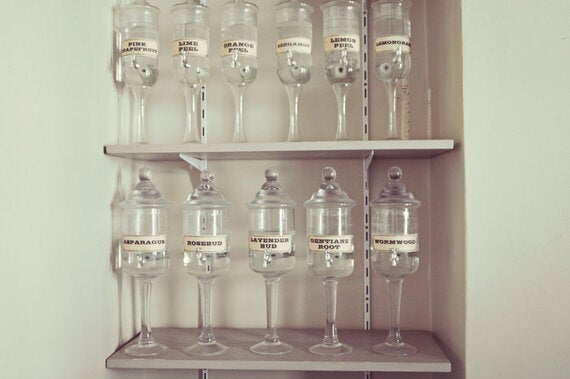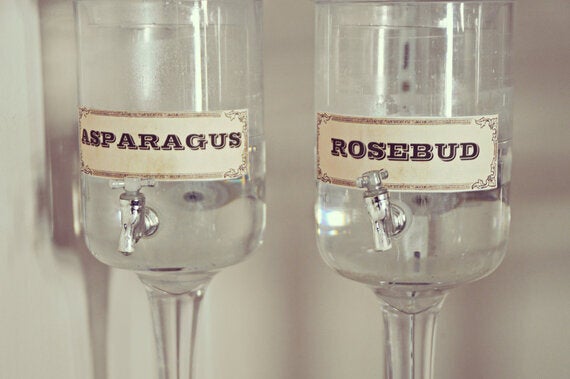
Photo Credit: Portobello Star
Gin, tonic, ice, and lemon. Serving a classic G&T couldn't be simpler, in theory. And yet home-made attempts are often lacklustre compared to bar-bought ones. Access to quality ingredients are not the problem - local supermarkets are awash with small-batch artisan gin brands. And as for premium tonic water, it's even made it into the essentials aisle. So I decided to ask an expert and headed to Notting Hill's Portobello Star. An historic bar which is home to Portobello Road Gin and the fabled Ginstitute.
According to Ashton, head bartender, the first step to G&T perfection is to choose a gin that matches your mood. Think about what you want. Scottish gins are more earthy with forest botanicals. Want something a little more fruity? Pick a fruity gin. Classic? Get a London Dry.
Get your glass right. Ashton favours the Spanish copa. This huge balloon-shaped glass will hold all the aromas inside whilst enabling your G&T to slosh around. By agitating the liquid, you're activating the flavours.
Use as much ice as possible. A measly handful will over-dilute it. You need to keep it as cold as possible, so fill it to the brim. Ice goes in first so that the gin chills as it runs over the cubes to the bottom of the glass. Duke's bar in St James' even keeps its gin in the freezer.
Choose a tonic depending on your mood. For example, a Mediterranean tonic water contains half the quinine, so is much lighter. Ashton prefers a ratio of 50ml of gin to 100ml of tonic. But it depends on personal taste and also the gin itself. Lighter gins such as Bombay Sapphire can't cope with a hefty slug of tonic, but the bolder London Drys can stand up to quite a lot.
Now the garnish. This final sprig, slice or peel can either compliment the gin or mirror one of its own botanicals. For example, a slice of cucumber is a favourite garnish for both Hendrick's and Martin Miller's as both gins contain this ingredient. But stay away from anything too flavourful - contrary to tradition, don't squeeze loads of citrus into your glass or the acid will wash away the more delicate notes of the gin. Ashton recommends using only the zest, two long strips with a potato peeler and avoiding the bitter white pith. The lightly-perfumed oil of your lemon/lime zest - or with Portobello Road Gin pink grapefruit - will accent the gin beautifully. Take one strip and lightly rim the glass, then drop it down the inside. Gently twist the second over the top to release an invisible mist of oils. And Voila.
A true Gin Connoisseur, however, may want to take it one step further. I'm talking about creating a custom gin with your chosen blend of botanicals. It's quite a length to go to, but sledgehammers and nuts aside.. it seems the next logical step in our gin renaissance. If you think you know your angelica root from your coriander leaf, then why not put your money where your mouth is? In London, City of London Distillery, Bump Caves and the Portobello Star's own Ginstitute invite customers to come in and blend their own. Further afield, The Cambridge Distillery offers a bespoke tailoring service. After all, gin does lends itself to customisation more than any other spirit. For example, now the G&T class is over, Ashton's preparing an Easter-themed martini which involves spraying the glasses with a super-strength hot cross bun gin.

Photo Credit: Victoria Ferran
This strange new gin was distilled upstairs by steeping actual hot cross buns in natural grain spirit for 24 hours, after which it takes a trip through Copernicus II, a copper pot still, where it's heated, vapourised, and then condensed. Adding purified water brings the mega-strong gin down to a drinkable strength. So if it works for hot cross buns - what else can be made into a gin distillate? I climbed the old wooden stairs to find out.
The Ginstitute is a small square room flooded with sunlight. Along one side is a wooden bench straight out of a chemistry lab. Tall scientific beakers are filled with brightly-coloured botanicals macerating away in ethanol. One is smoked chicory, another is labelled cassia bark - a type of cinnamon which smells like Big Red chewing gum. A large pile of lemongrass, cut in half and toasted, is awaiting its turn.

Photo Credit: Victoria Ferran
Opposite us, the wall is lined with shelves groaning under the weight of homemade distillates, transparent in their vintage glass bottles. There are many familiar faces: Juniper Berries, Lemon Peel, Bergamot. But also curious interlopers: Asparagus, Avocado, Horseradish, Lapsang Su Chong. For a London Dry, botanicals must all come from a plant - so pips, seeds, stem or leaves - and be distilled in natural grain spirit. After that the sky's the limit.

Photo Credit: Victoria Ferran
It seems unlikely that these weirder distillates would work but a resident Ginstructor reassures me that these bold new botanicals can blend very successfully with traditional ones. But asparagus? really? Apparently so. They've recently revived the Red Snapper - a popular 1920s Parisian cocktail and precursor to our Bloody Mary - with an asparagus-loaded Portobello Road gin.

Photo Credit: Victoria Ferran
So if you really want to achieve the ultimate G&T, exactly to your liking, customisation may be just be the thing for you. Alternatively, you can leave the gin-making to the master distillers and concentrate on perfecting your serve. As Ashton says, a little care and a LOT of ice can go a long way to making a damn good G&T.